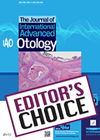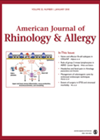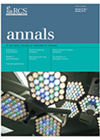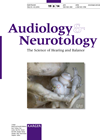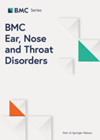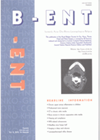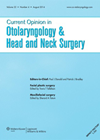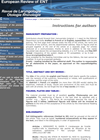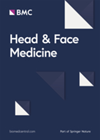
Journal Reviews archive for March 2015
The effect of sleep deprivation on auditory processing
This article caught my eye for personal and professional reasons. As a full time ENT trainee working 24-hour on-calls, I also have young children who have never slept through the night and don’t respect weekends or days off. My FRCS...
Outcomes in rhinosinusitis
This review goes through the various different ways of assessing outcomes and describes the pros, cons and limitations of each. The different methods are described in the context of guidelines in diagnosis and management and compared with other conditions such...
Sarcoidosis and the nose
This retrospective case note review from Mount Sinai in New York looked at just 14 patients with sarcoidosis. Individual ENT units in the UK are likely to see relatively few of these patients, unless there is a major tertiary referral...
Patient-reported outcome measures in septorhinoplasty
Patient-reported outcome measures (PROMs) are used increasingly in surgical research to quantify the efficacy of surgical interventions. This can help to fill an ‘evidence gap’ where healthcare rationing threatens particular treatments. Procedures aimed at improving quality of life, especially with...
Aural fullness in Ménière’s disease
This survey of the Finnish Ménière’s Association aimed to examine the severity and consequences of aural fullness, the least reported cardinal symptom of Ménière’s disease. An initial pilot survey informed a second, restructured survey, giving a total of 726 respondents...
Clinical evaluation of an image-guided cochlear implant programming strategy
This study ingeniously combines two current areas of active research in cochlear implantation (CI), the first is the use of imaging to assess intra-cochlear electrode position. The second, is the optimisation of a programming strategy to prevent current spread between...
Review: Cochlear Implantation in SSD?
Contra lateral routing of signals (CROS) using hearing aids and bone conduction devices has been the conventionally accepted modality for the treatment of single sided hearing impairment. The CROS hearing aid has been found to improve speech understanding in noise,...
Incidental findings in paranasal sinus Magnetic Resonance Imaging (MRI) studies
Incidental findings in the paranasal sinuses of mucosal thickening and polyps in MRI studies may cause concerns for clinicians and patients. The authors studied MRIs of 982 participants with a mean age of 58.5 years who randomly and independent of...
Cochlear implantation in Ménière’s disease
This was a Belgian retrospective study of seven patients with Ménière’s disease who underwent cochlear implantation. All patients had bilateral severe to profound hearing loss and all met AAO-HNS criteria for Ménière’s disease. Follow-up for patients ranged from six months...
Current management of facial fractures in the preadolescent
This article reviews the trends in management of preadolescent facial fractures – a challenging population due to the need to consider growth, dynamic changes in dentition, and evolving fracture patterns. In summary, conservative management is preferred in all fractures in...
Facial reanimation
Non-conservative surgery in the parotid region results in a devastating complete facial paralysis (as with other causes of persistent facial palsy). Lengthening temporalis myoplasty is one of the available rehabilitating techniques. This is a series of 15 patients who had...
Facial Landmark localisation by curvature maps and profile analysis
The detection of three dimensional (3D) landmarks by scanning surfaces is a well established method in medical science. Anatomical landmarks are visually or palpably detectable and act as reference points for clinical measurements. When measuring these landmarks with a sliding...

